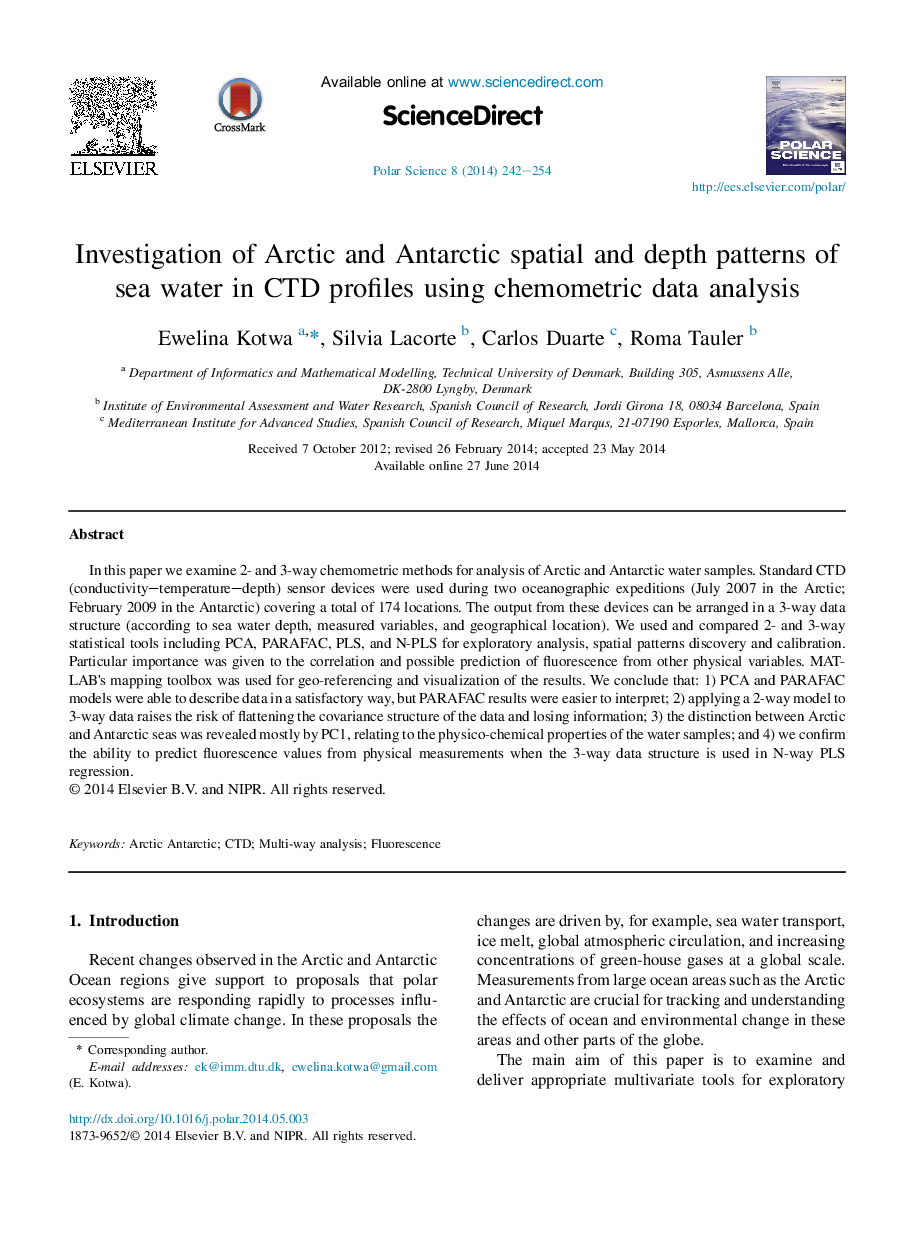| Article ID | Journal | Published Year | Pages | File Type |
|---|---|---|---|---|
| 4683177 | Polar Science | 2014 | 13 Pages |
In this paper we examine 2- and 3-way chemometric methods for analysis of Arctic and Antarctic water samples. Standard CTD (conductivity–temperature–depth) sensor devices were used during two oceanographic expeditions (July 2007 in the Arctic; February 2009 in the Antarctic) covering a total of 174 locations. The output from these devices can be arranged in a 3-way data structure (according to sea water depth, measured variables, and geographical location). We used and compared 2- and 3-way statistical tools including PCA, PARAFAC, PLS, and N-PLS for exploratory analysis, spatial patterns discovery and calibration. Particular importance was given to the correlation and possible prediction of fluorescence from other physical variables. MATLAB's mapping toolbox was used for geo-referencing and visualization of the results. We conclude that: 1) PCA and PARAFAC models were able to describe data in a satisfactory way, but PARAFAC results were easier to interpret; 2) applying a 2-way model to 3-way data raises the risk of flattening the covariance structure of the data and losing information; 3) the distinction between Arctic and Antarctic seas was revealed mostly by PC1, relating to the physico-chemical properties of the water samples; and 4) we confirm the ability to predict fluorescence values from physical measurements when the 3-way data structure is used in N-way PLS regression.
